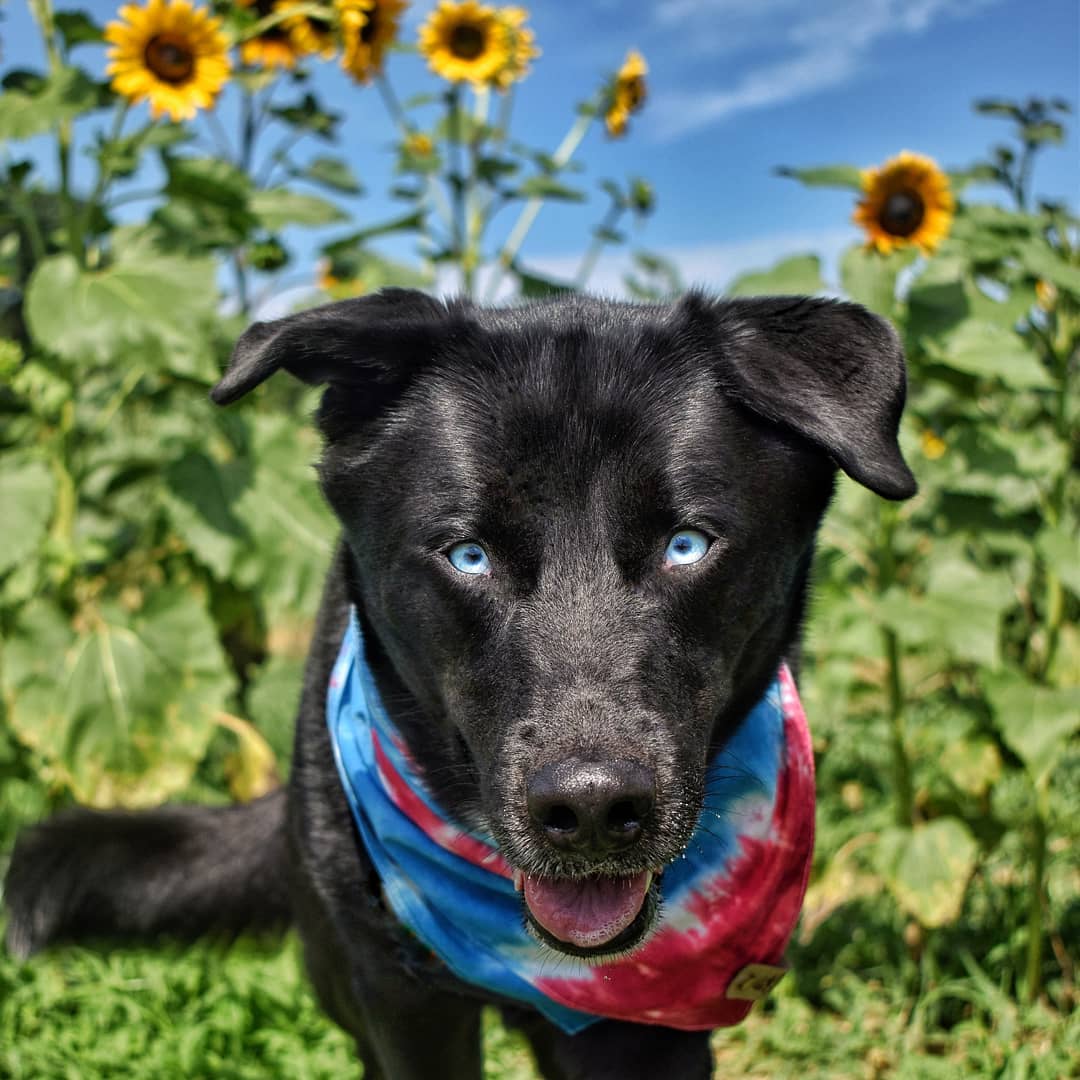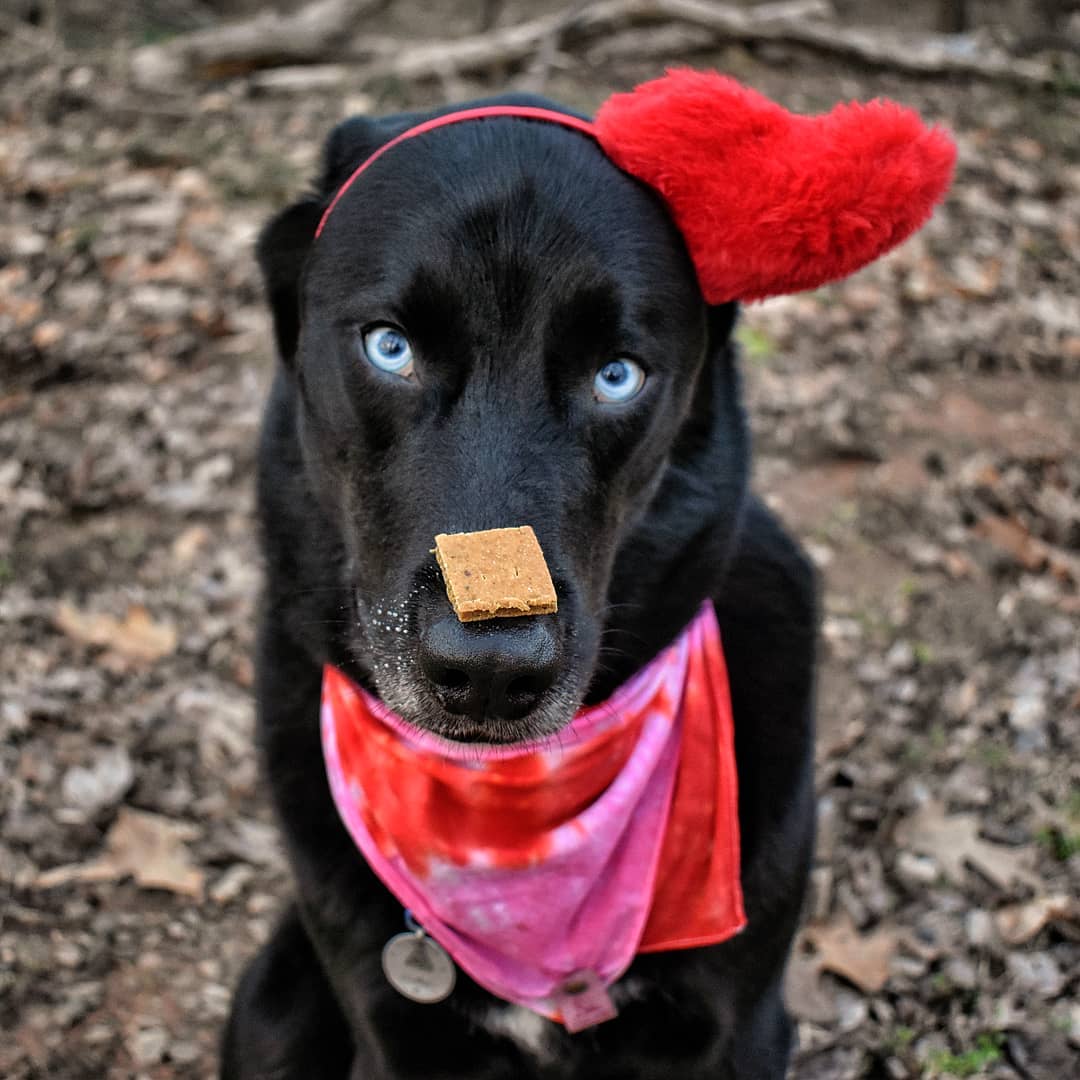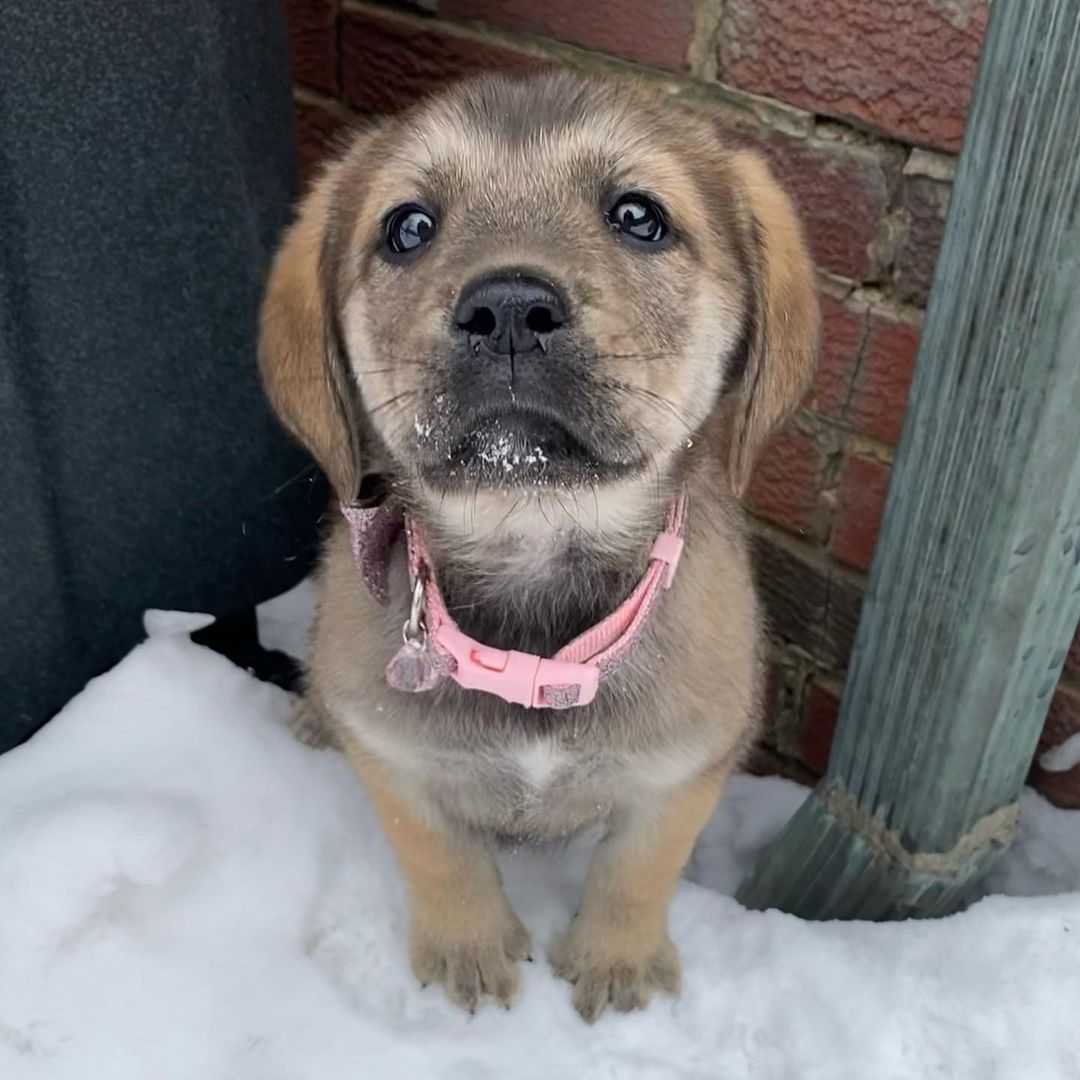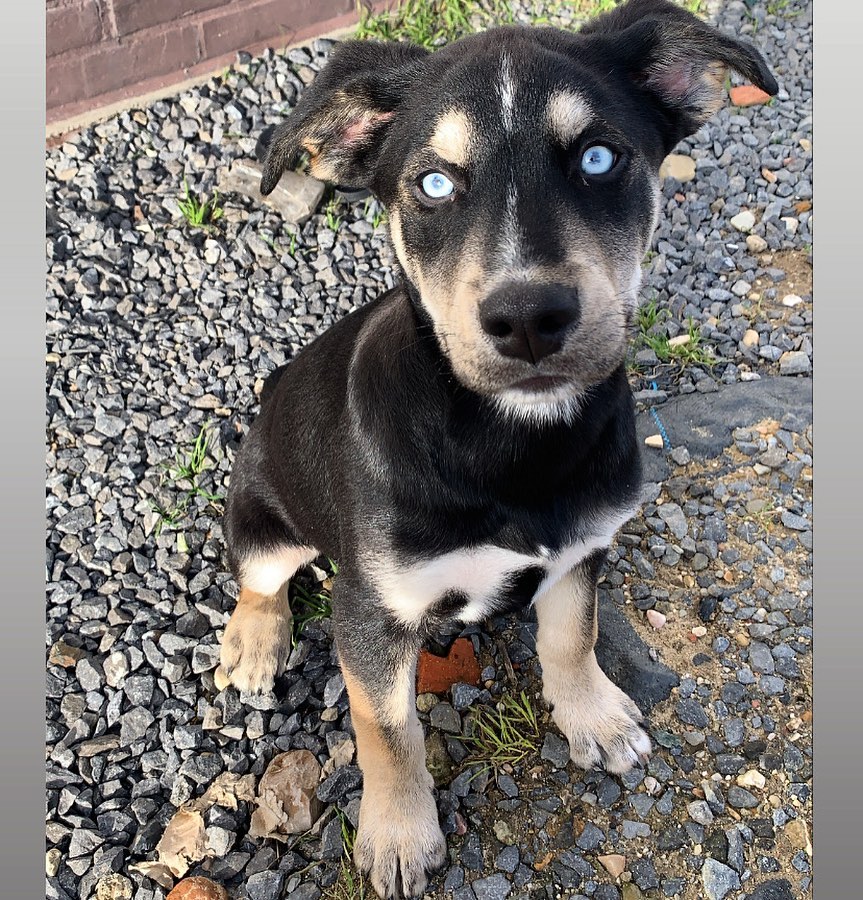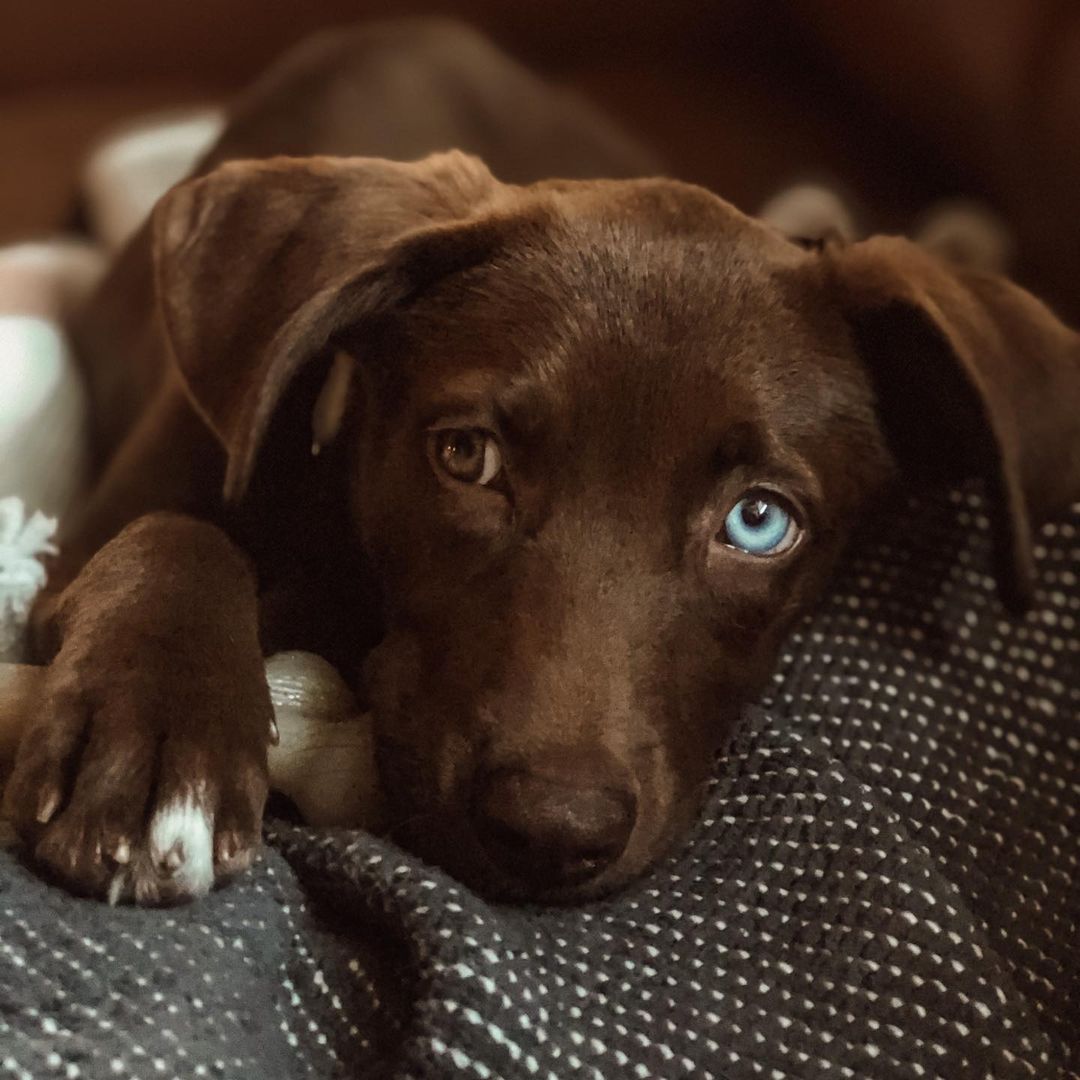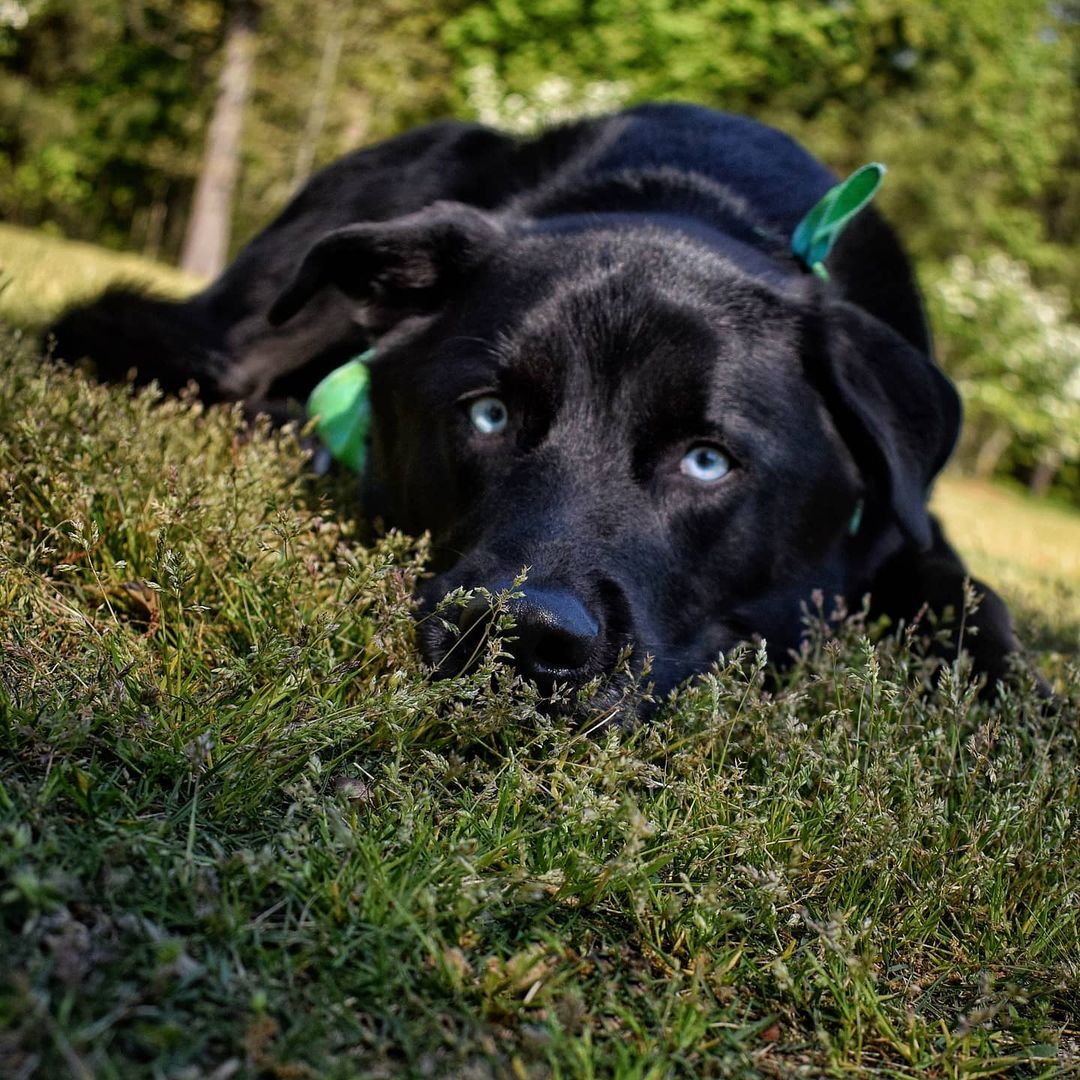The Husky Lab Mix is a mix of two of America’s most popular dog breeds, but that doesn’t mean they’re the perfect pet for everyone.
How do you know if this precocious pup is right for you? Continue reading!
Who is the Husky Lab Mix?
The Husky Lab Mix, also known as Labsky or Huskador, is the crossbreed offspring of the Siberian Husky and the Labrador Retriever.
Known for its intelligence, loyalty, and zest for life, this hybrid enjoys great popularity among dog lovers everywhere!
Still, there is a lot you should know about this crossbreed before deciding if it is best for you.
Let’s start by covering the crossbreeding controversy!
The Design Dog Debate
Designer dogs are nothing new, but that doesn’t mean they’re conflict-free.
Designer dogs, also called hybrid dogs or mixed breeds, are equally represented among experts and dog lovers.
Aren’t nuts and crossings the same to start with?
While many view the mothers and crossbreeds as a unit, others point out that crossbreeds are especially “designed” dogs that result from the mating of two specific purebred parents.
Mutts, on the other hand, are more of a “random” mixture and often have an unknown ancestry. More information can be found here.
So what about the health of mongrels and purebreds?
As many dog enthusiasts know, purebred animals tend to have general family problems because they were bred across generations.
While overbreeding is not ideal, it is often used to help maintain breed standards.
As a result, the genetic disorder is becoming more common in purebred dogs.
However, those in favor of the hybrid claim that the practice actually expands the gene pool, thus reducing the likelihood of genetic diseases being passed on.
Others disagree and insist that crossbreeds and purebred dogs are just as prone to inheriting the same health problems.
You will find more information on this topic here.
It’s an intriguing topic worth looking into. For now, however, we’re still learning about the crossbreed that brought us here, the Husky Lab Mix!
Where does the Husky Lab mix come from?
Since the Husky Lab Mix is considered a first-generation hybrid, its story is still in the works.
While we can’t definitely say how it came about, we can learn more about what makes him so special by looking at his parents’ origins.
Let’s start with the husky.
Origin of the Siberian Husky
The Siberian Husky is believed to originate from an ancient breed of dog in Asia.
Bred by the Chukchi, the ancestors of the husky were mainly used as companions and sled dogs.
The ancestors of the huskies played an important role in the survival of the Chukchi.
However, when temperatures changed, the Chukchi forced to move, creating a more resilient sled dog that could easily travel for miles and move cargo at the same time.
From there came the modern husky as we know it!
Today the husky ranks 12th out of 194 on the American Kennel Club’s (AKC) list of the most popular dog breeds.
And although he’s a popular family pet, this smart and resilient dog is used by Mushers across North America to this day.
Let’s get to know the laboratory now!
Origin of the Labrador
An ancient breed believed to have existed as early as the 16th century, likely originated in Newfoundland, Canada.
Originally bred for duck hunting and fish hunting, the laboratory was a popular angler and known for its intelligence and loyalty.
With its short, weatherproof coat, the Labrador was the perfect candidate to work on boats in Canada’s freezing cold climates, and its “otter tail” was the perfect propeller when it was swimming to retrieve its master’s catch.
Perfected by British breeders in the 19th century, many of the Labrador’s original traits have been retained.
With his intelligence, loyalty, and gentle nature, he is one of the most desirable and revered traits of the breed.
The Lab made its way to America in 1903 and was officially registered with the AKC in 1917, where it is currently number 1 on the list of America’s Most Popular Dog Breeds.
Lab Husky mix temperament
Because Labsky is a crossbreed, it can be difficult to pinpoint its exact behavioral traits.
That’s because the Husky Lab Cross was able to get a mix of temperamental traits from its purebred parents.
So how can we learn more about Lab Husky Mix’s behavior? Well, we have to take a look at the spirited characteristics of the laboratory and the husky!
Sled dogs
The Husky is a family-oriented breed to start with, known for its pleasant nature and energetic endurance.
With a background that combines society and work, it’s no wonder this dog hooks up with everyone he meets!
However, he is energetic and will need a securely fenced yard to run and play in.
He may also have a desire to hunt, so walking him on a leash outside of the home is a must.
This breed loves children and other pets. He greets strangers with joy and sees everyone as a friend.
While not the best watchdog, he makes an excellent dog for those who get company often.
Well, what about the lab?
There’s a reason the Lab is America’s Favorite Family Dog!
His intelligence, loyalty, and eagerness to please mean he makes a fantastic companion with children and other pets.
This is a gentle breed that loves its family unconditionally and wants nothing more than to make its people happy!
It is quick to learn and easy to train. However, we should note that this breed matures slowly and appears puppy-like into adulthood.
He can also be prone to chewing and boredom, which is never a good combination. Hence, it is left to its owners to ensure that the Labrador is properly exercised and is also maintaining good mental stimulation.
Husky Lab mix temperament
Since both the Husky and the Lab are known for their stamina and energy, a future Husky Lab Mix owner should prepare for an energetic dog who loves people, is very social, and needs lots of toys, exercise, and mental stimulation to be happy to stay.
This will be a folk-oriented breed as well, and he will live best next to his family.
As with all dogs, experts recommend early training for socialization and obedience with the Husky Lab mix.
By socialization and obedience training early on, you can reduce your dog’s feelings of fear and also ensure that he is adaptable, calm, and well-behaved in all situations.
Define the properties of the Husky Lab Mix
What a first-generation hybrid looks like is always left to chance. Genetics and the Husky Lab mix are no exception.
Let’s take a look at his purebred parents to see what traits he might inherit.
With its thick coat, feathered tail, erect ears, and brown and blue eyes, the husky is without a doubt a beautiful and commanding dog!
It usually weighs between 35 and 60 pounds and can stand anywhere from 8 to 9 inches tall.
The husky’s coat is available in many color combinations:
- White
- black
- Agouti
- Piebald
- copper
- brown
- Syringes
- silver
- sable
- Blue Belton
- Black and gold
The Labrador is usually slightly larger than the Husky, being around 22 to 25 inches tall and weighing around 55 to 80 pounds.
Lab coat
In contrast to the husky, the laboratory has floppy ears and a fur that is only available in three standard colors:
Keeping the above information in mind can prepare yourself for your Husky Lab mix size to be between 20 and 23.5 inches.
The weight of your full-grown Husky Lab mix will be anywhere from 35 to 80 pounds.
So what about grooming and other grooming needs for Labsky dogs? Read on to find out!
Husky Lab mix grooming and general grooming
Usually, the requirements for caring for a mixed breed vary, as do size and temperament. This is because the needs of the crossbreed will usually depend on the type of coat your dog inherits.
When it comes to the Husky Lab mix dog, you’re in luck! The Lab mother breeds have similar coat types and therefore require similar grooming needs!
Both the lab and the husky lost the most during the shedding season.
Because of this, your Labsky needs to be brushed two to three times a week to keep your skin and coat at their best and to keep loose hair under control.
During the shedding season, you should probably rub the coat with a metal comb.
Your Labsky will also need to clean their ears regularly to keep them free of waxy buildup and to reduce the chance of infection.
Of course, he also needs his nails regularly so that they don’t crack.
Husky Lab mix training and exercise
While Labrador and Husky have similar needs when it comes to grooming, the same does not apply to training.
If your Labsky is more similar in temperament to his Lab parent, training could be easy. Labs are very energetic, but they are also very keen on learning new tricks and learning commands.
Introducing new tricks into your Labsky’s exercise regimen will help keep it mentally happy and keep boredom at bay.
On the other hand, if you have a Labsky who prefers their Husky parent, you are going to need some patience and consistency.
The husky has a tendency to be an independent thinker, and he doesn’t like learning new things in the same way as his Labrador colleague.
However, as long as you use the positive reward system, offer lots of traits and praise, and make the training fun, you should have no problem training your Labsky dog!
Now let’s continue with the training.
Both the Labrador and the Husky are athletic and high-energy, with the Lab being a little more than the Husky.
Keep in mind that the Labrador matures a little slowly and can behave like puppies into adulthood.
And while the husky may not be as energetic as its Labrador counterpart, it is nonetheless just as needy when it comes to proper training and play.
For this reason, you should prepare to do your Labsky mix for at least an hour a day. This can include, for example, descents, hikes, long walks, swimming, and romping around in the dog park.
You should also make sure your Labsky dog has ample chew toys and a fenced yard that you can let him run and play freely in order to burn off some of that excess energy.
Remember, early childhood socialization and obedience training in puppyhood will benefit this crossbreed and will help you manage it in old age.
Lifespan and Health Issues of a Husky Lab Crossbreed
All dogs have a tendency to inherit hereditary diseases from their parents, and your crossbred dog is no exception.
For this reason, you should consider the early screening of your Labsky dog. Early health checkups can help prepare for, or even avoid, your dog’s future problems.
Now let’s see what Labsky could inherit from his thoroughbred parents.
With a lifespan of 12-14 years, the Husky is predisposed to cataracts, progressive retinal atrophy, corneal dystrophy, hip dysplasia, follicular dysplasia, zinc deficiency, and hypothyroidism.
The Labrador’s lifespan is typically 10-12 years, and they can be prone to elbow dysplasia, hip dysplasia, loose knee joints, broken ligaments in the hind legs, heart disease, eye disease, epilepsy, cancer, obesity, gas, and chronic allergies.
Is a Husky Lab Mix the right dog for me?
The Labrador Husky Mix is the perfect pet for someone, but is that someone?
While the Labsky is an excellent dog for families and singles, it may not be the best choice to train and exercise this crossbreed for those who don’t have the time, patience, or energy.
The Husky Lab Mix is an active dog who needs a lot of training and exercise to use all of its energy and keep them fit and happy.
Keep in mind that this is a crossroad that works best in houses with fenced back yards too, where he can run and play freely, as an hour of exercise each day should also go with good playtime.
So, if you don’t mind having a very high-energy dog who sheds and needs brushing twice a week, and who wants you with him all the time, this could be the crossbreed for you!
How do I find a Husky Lab Mix Puppy!
When choosing your Labsky puppy, we recommend going through trusted sources. While there are many ways to get your Labsky puppy, not all are reputable and responsible.
Because health is so important, make sure you go through reputable breeders who have screened their puppies and are able to offer certificates that prove their dogs are healthy and able to walk home with you.
Always ask about health or temperamental issues with previous litters and the parent breeds. You may even have the opportunity to meet the parent breeds in person.
Also, most animal shelters will cover the first vet trip to make sure your Labsky is up to date on their vaccines and is healthy.
Do you have a Labsky or Huskador dog? We’d love to hear from you! Tell us about him in the comments!
